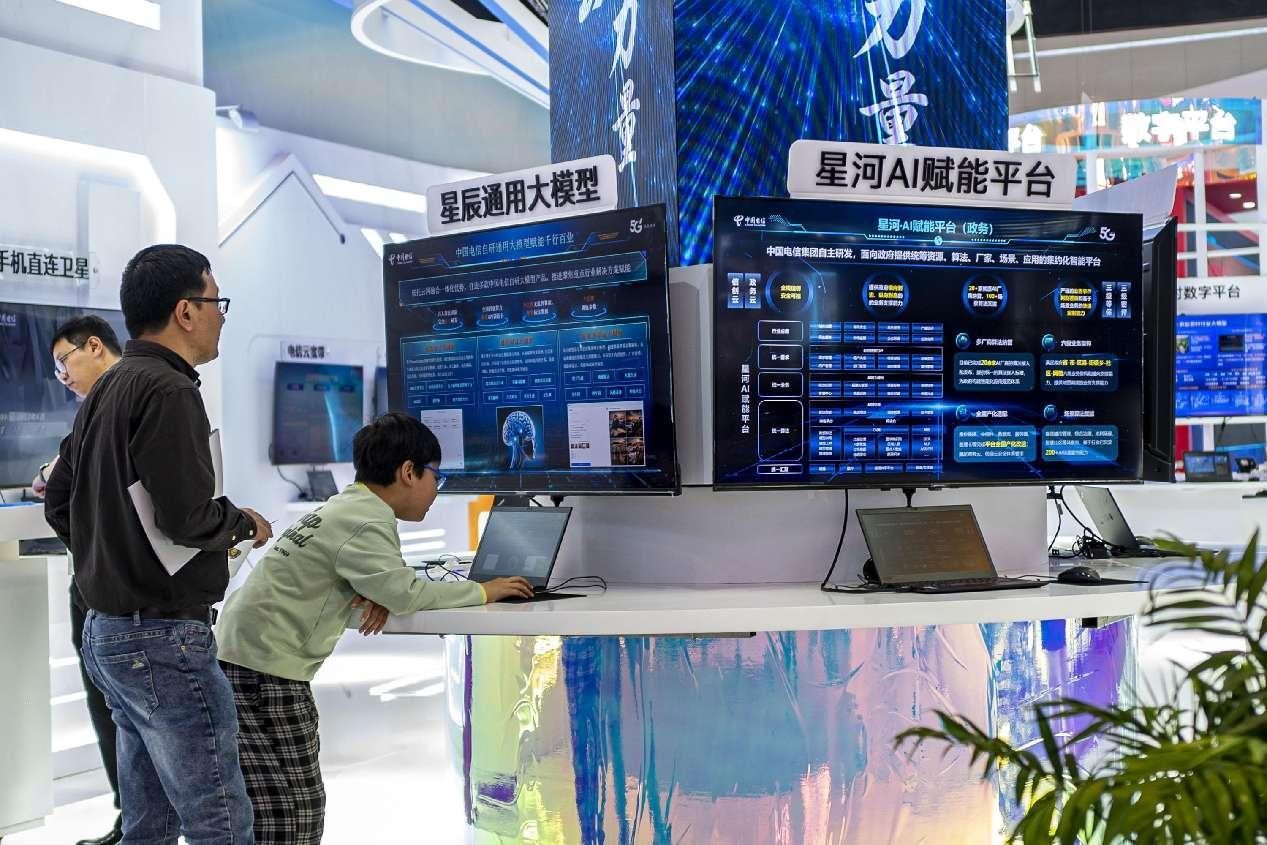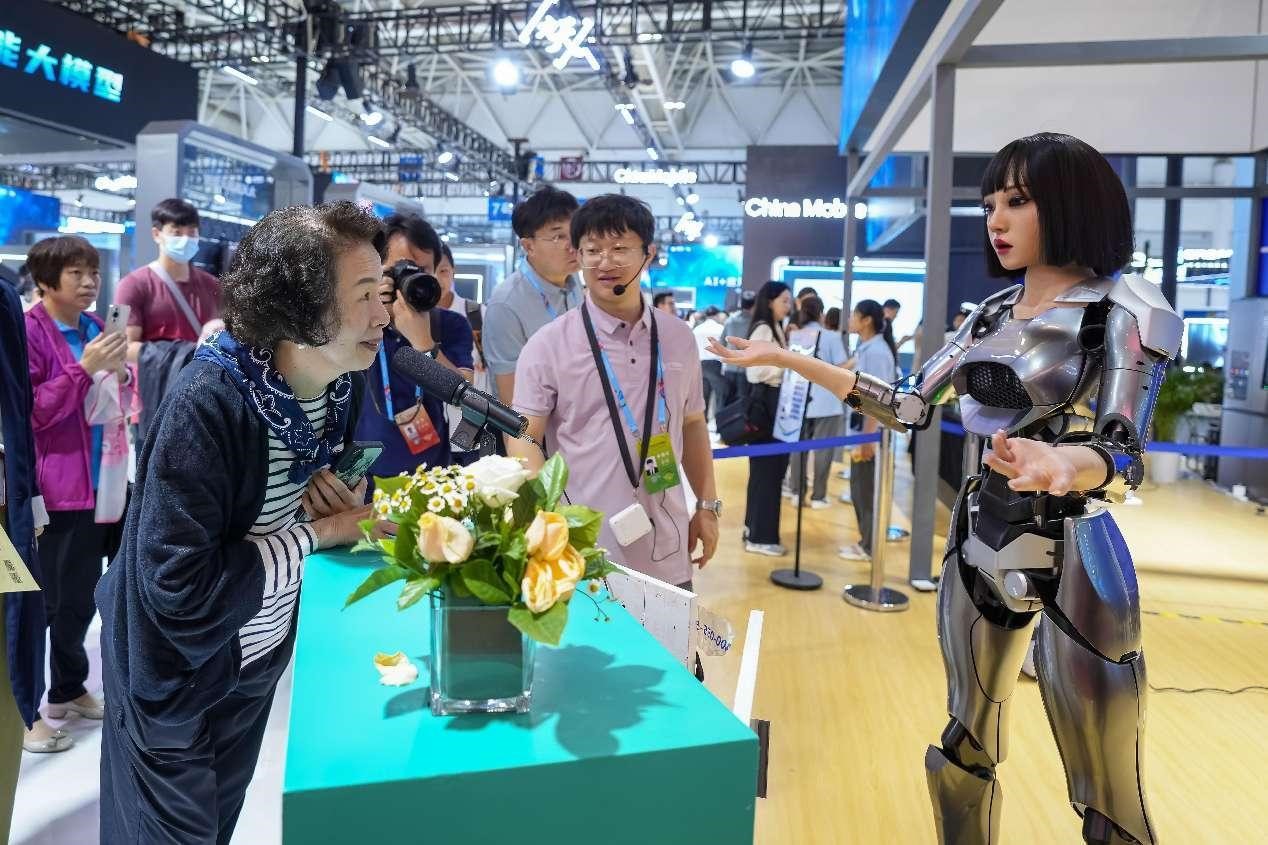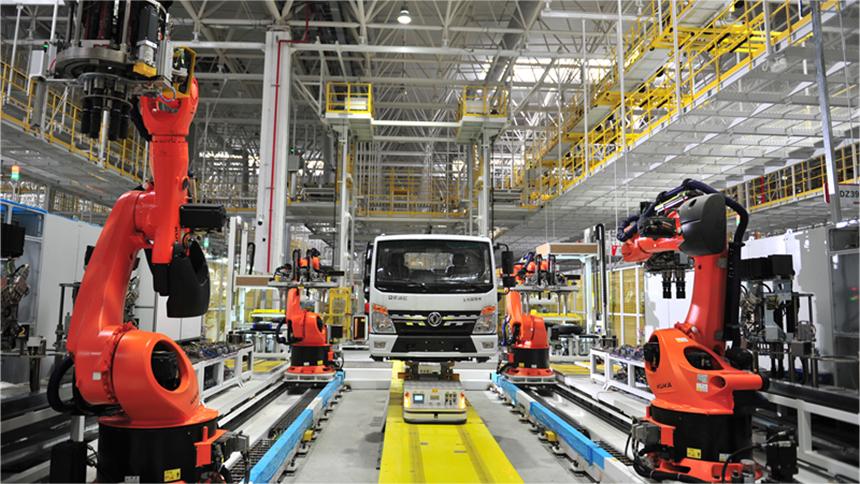Chinese providers of AI-driven large models reduce prices for better AI development

Visitors experience a large model developed by Chinese telecommunication company China Telecom at the 2024 China Brand Day events in Shanghai, May 12. (Photo by Wang Chu/People's Daily Online)
Recently, leading Chinese companies in the large model sector, including ByteDance, Baidu, Alibaba Cloud and Zhipu AI, have announced significant reductions in the prices of their generative artificial intelligence (AI) large models and related services.
Many of these companies have lowered their prices by more than 50 percent, and some products have even seen price reductions exceeding 90 percent.
"I often encounter problems when programming, and at such times, large models are a great source of inspiration. The price reduction of large models offers people more choices and lowers the threshold for usage, thus significantly improving work and learning efficiency," said Feng Yepeng, a computer science student at a university in Beijing.
Luo Yiran, who works in network operations in Wuhan, central China's Hubei province, said that the user experience of domestic large models has been continuously improving in recent years, meeting her practical needs such as seeking inspiration for planning and collecting background information.
In her opinion, it is a positive trend to reduce prices in a timely manner as application scenarios continue to expand.
In participating in this "price reduction trend," large model service providers have their own considerations.
Some hope to explore more application scenarios.
Shen Dou, executive vice president of Baidu and chief of Baidu AI Cloud Group, said that the development of AI needs support from new development paradigms and new technological tools. By reducing the price of certain products and making some core large models free, Baidu is minimizing the cost of trial and error in its innovation, Shen explained.
"Price is just one factor that consumers consider when choosing large models. Compared to price, they consider the models' effectiveness, application scenarios, and successful cases more important. Through price reductions, we hope to quickly explore and replicate more potential application scenarios for large models," Shen said.
Besides, some companies hope to release market potential through price reductions.
Through its self-developed Tongyi AI model family, Alibaba Cloud has built a matrix of foundational models and industry-specific models. Senior expert Zhu Xunyao of Alibaba Cloud noted that the price reductions aim to make large models affordable for more ordinary users and small- and medium-sized enterprises, therefore accelerating the release of potential in the market of AI application.
Zhu said that for Alibaba Cloud, the cost for users to use large-scale models mainly lies in the computational resources consumed during model inference, which are significantly lower on the public cloud compared to private deployment.
"We have greatly reduced the cost of model inference based on a series of key technologies and products we have developed. The technological dividends, economies of scale, and cost advantages brought by the public cloud have boosted our confidence in lowering prices and seizing the market," Zhu said.

A woman talks to an artificial intelligence robot at the 7th Digital China Summit in Fuzhou, southeast China's Fujian province, May 23. (Photo by Xie Guiming/People's Daily Online)
Behind the price reductions lie the efforts and hopes of many large model providers and even internet companies to empower work and life with AI.
Zhang Peng, CEO of Zhipu AI, believes that the development of AI technology has entered a new stage. However, he said, there is still a significant gap between the improvement of the technology curve and enabling more people to benefit from the powerful productivity of AI. There is still much work to be done in effectively utilizing the capabilities of large models to help people in their work, learning, and daily lives, he added.
Wang Peng, associate researcher with the Institute of Management of the Beijing Academy of Social Sciences, noted that with the continuous development and optimization of large model technology, the marginal time and resources required for model training are gradually decreasing.
In particular, algorithm improvements, computational efficiency enhancements, and declining hardware costs have made it possible to reduce the price of large models, Wang said.
From this perspective, the underlying reasons for the current wave of price reductions for large models in both domestic and international markets are generally similar. Major manufacturers aim to promote the popularization and application of AI technology through price reductions.
"On the one hand, price reductions make large model services more affordable, effectively expanding the market size and user base. On the other hand, significant price reductions in the short term will intensify market competition and prompt large model providers to continuously improve service quality to retain users," Wang said.
Over time, inefficient or underfunded businesses may be eliminated, while distinctive but difficult-to-scale businesses may be merged, Wang added.
Experts generally believe that the large model industry needs to explore diverse application scenarios, focus on data quality and privacy protection, diversify revenue sources, and improve user feedback mechanisms, so as to achieve healthier and more sustainable development.
Photos
Related Stories
- Fudan University to launch 100 AI courses, to drive innovation in industrial application
- Stanford AI team apologizes for plagiarizing Chinese university's model
- Chinese companies under spotlight as AI summit kicks off in Geneva
- Chinese scientists bring human eye-like perception to machines
- China's first AI hospital town debuts
- AI industry sees prosperous future in China
- China's manufacturing sector revs up with AI-empowered innovation
Copyright © 2024 People's Daily Online. All Rights Reserved.









